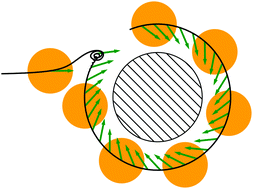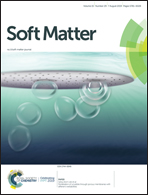Hydrodynamic mobility reversal of squirmers near flat and curved surfaces
Abstract
Self-propelled particles have been experimentally shown to orbit spherical obstacles and move along surfaces. Here, we theoretically and numerically investigate this behavior for a hydrodynamic squirmer interacting with spherical objects and flat walls using three different methods of approximately solving the Stokes equations: The method of reflections, which is accurate in the far field; lubrication theory, which describes the close-to-contact behavior; and a lattice Boltzmann solver that accurately accounts for near-field flows. The method of reflections predicts three distinct behaviors: orbiting/sliding, scattering, and hovering, with orbiting being favored for lower curvature as in the literature. Surprisingly, it also shows backward orbiting/sliding for sufficiently strong pushers, caused by fluid recirculation in the gap between the squirmer and the obstacle leading to strong forces opposing forward motion. Lubrication theory instead suggests that only hovering is a stable point for the dynamics. We therefore employ lattice Boltzmann to resolve this discrepancy and we qualitatively reproduce the richer far-field predictions. Our results thus provide insight into a possible mechanism of mobility reversal mediated solely through hydrodynamic interactions with a surface.



 Please wait while we load your content...
Please wait while we load your content...